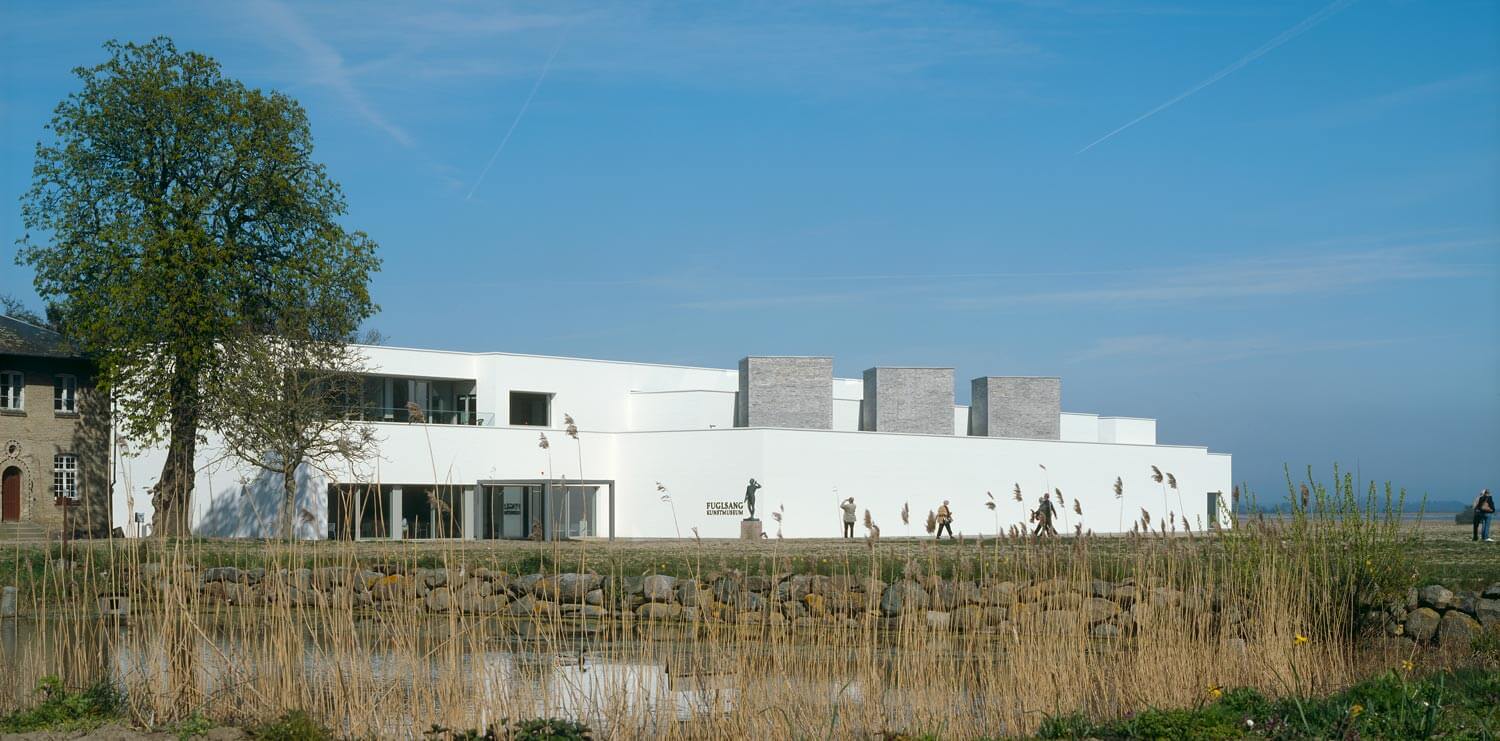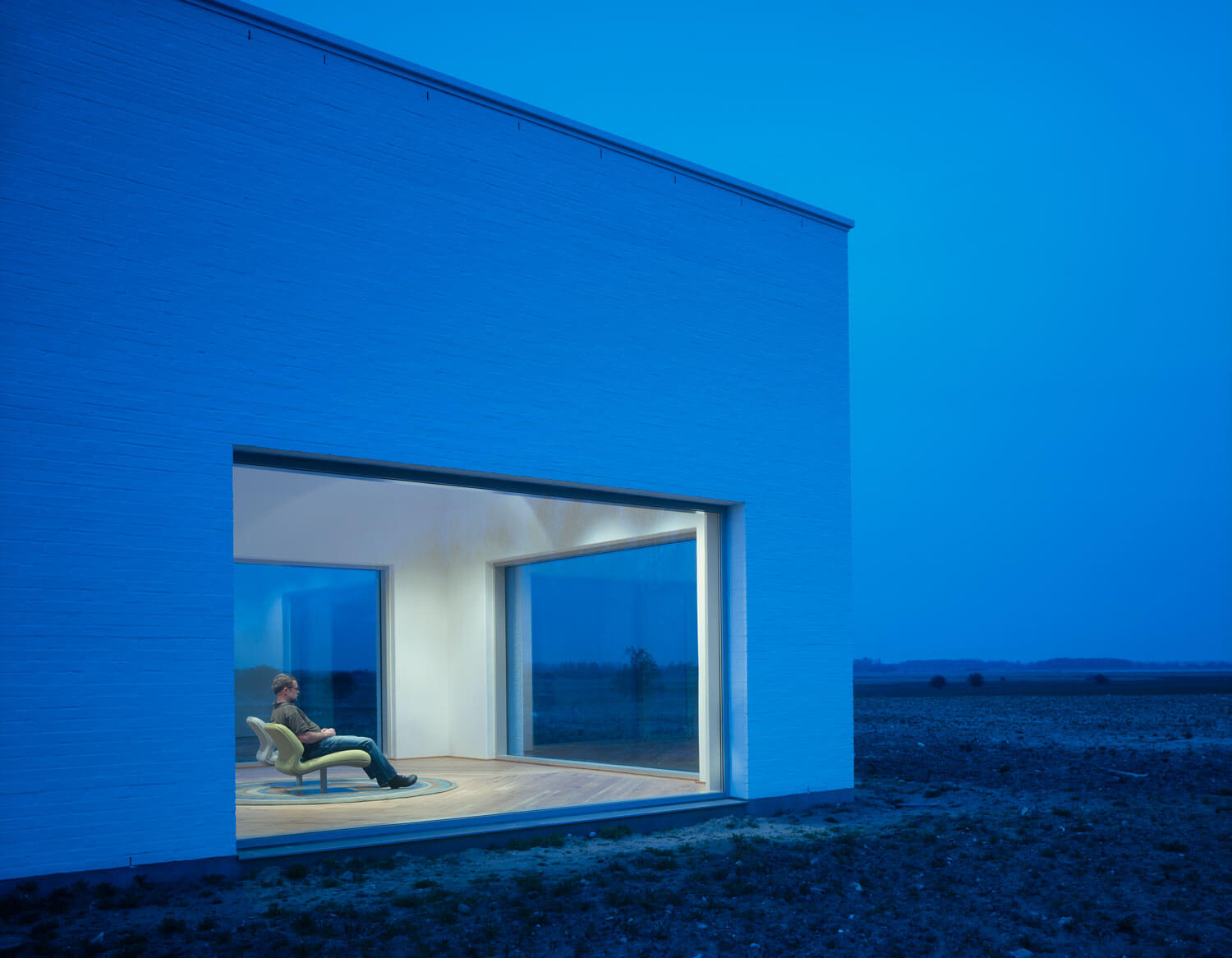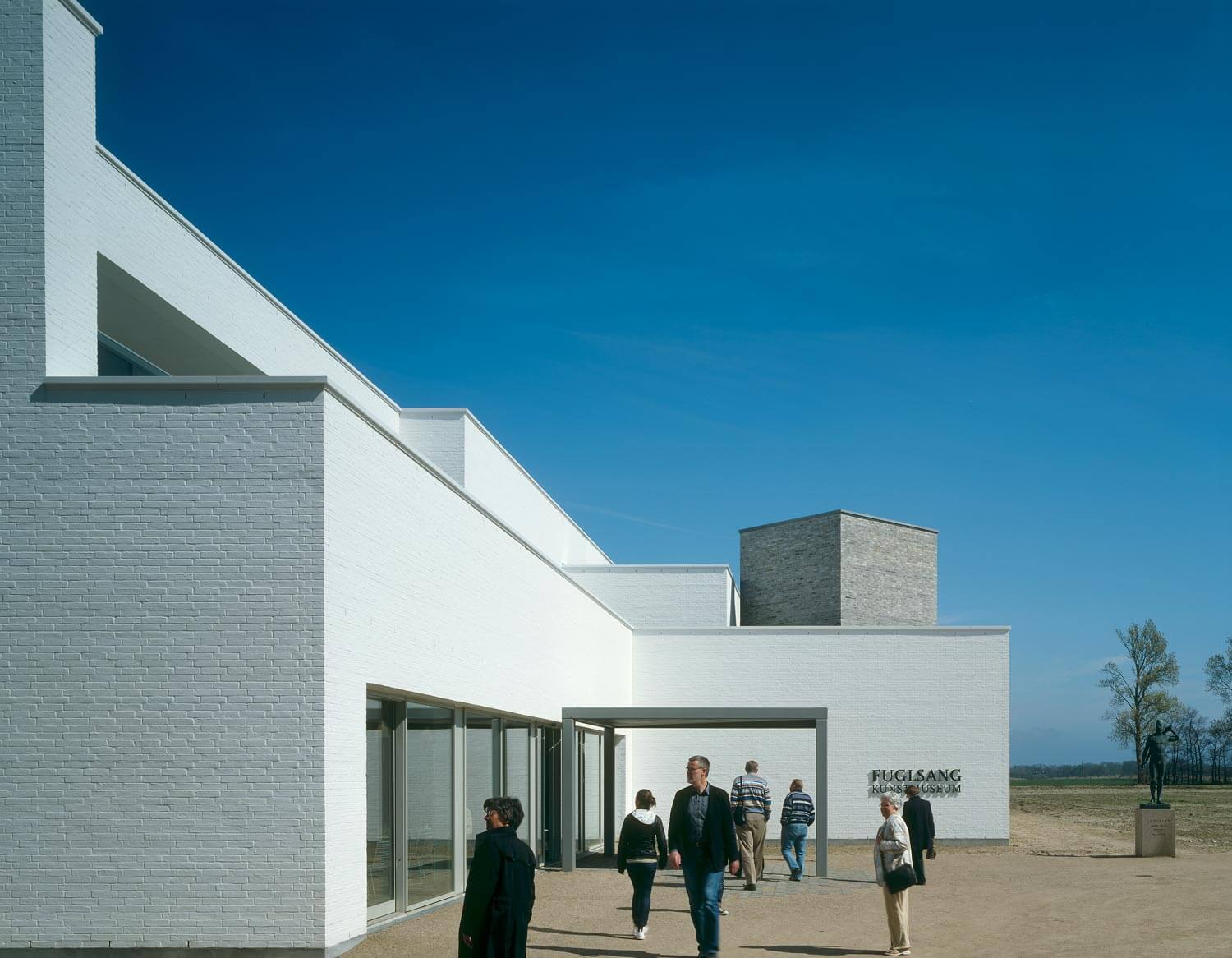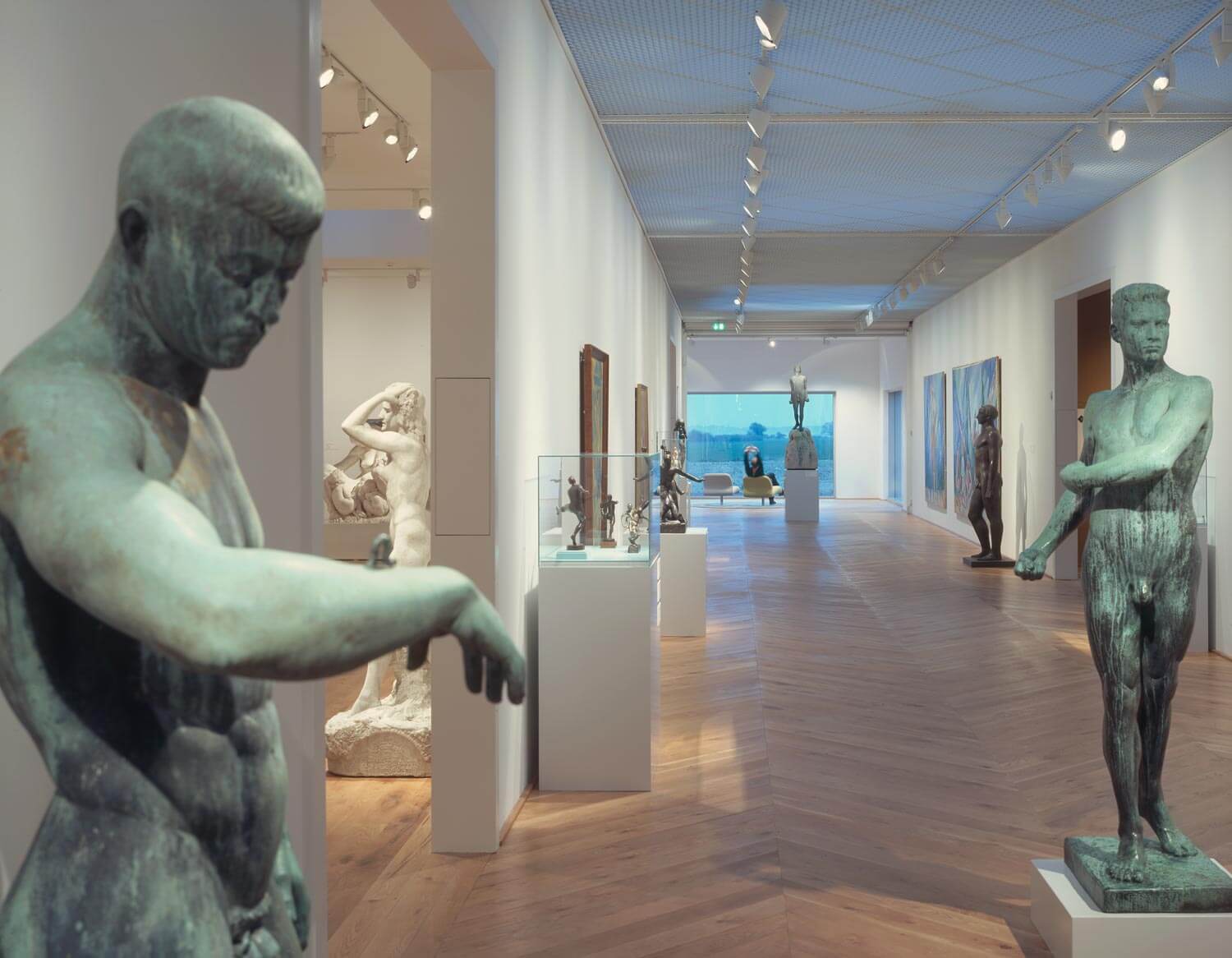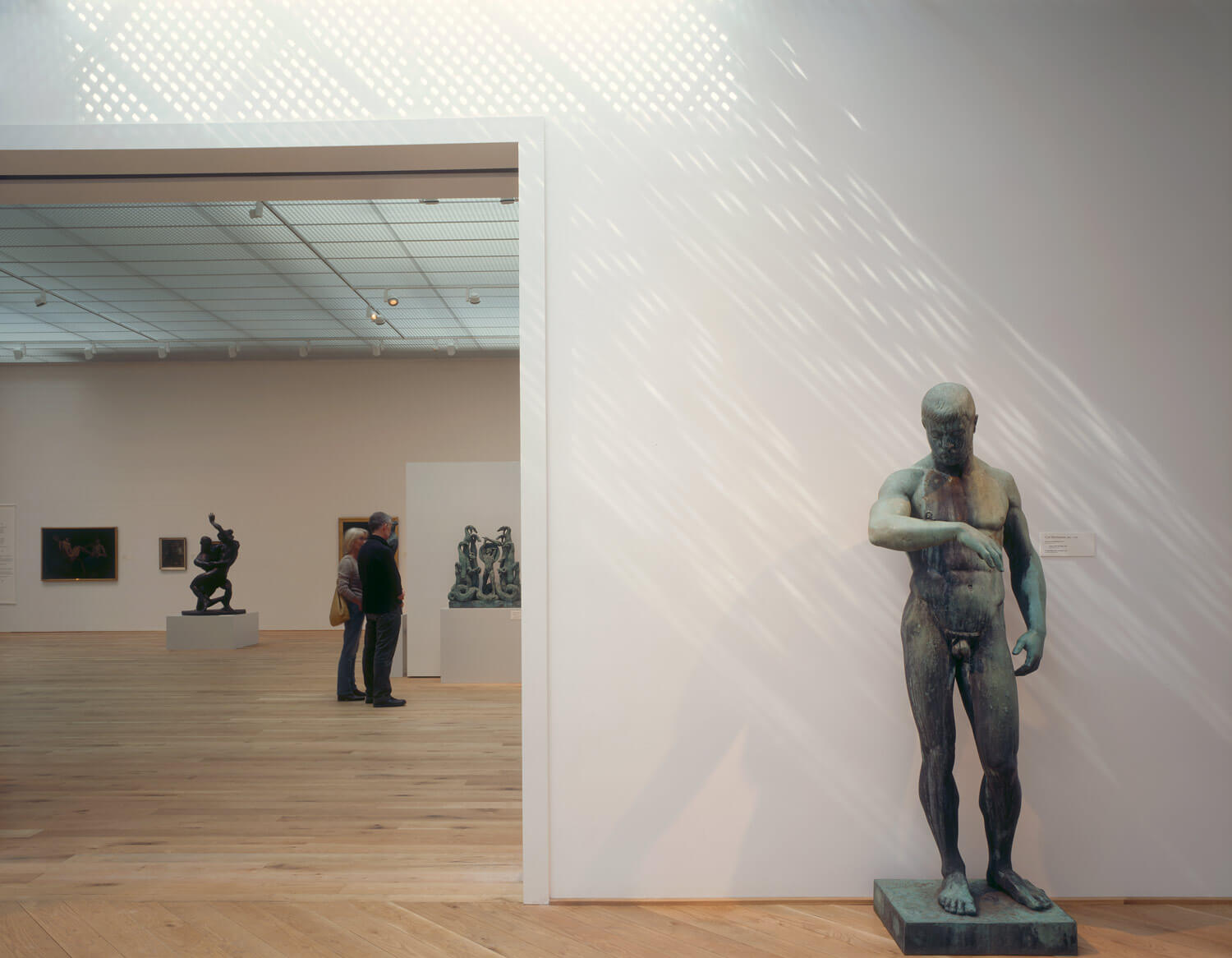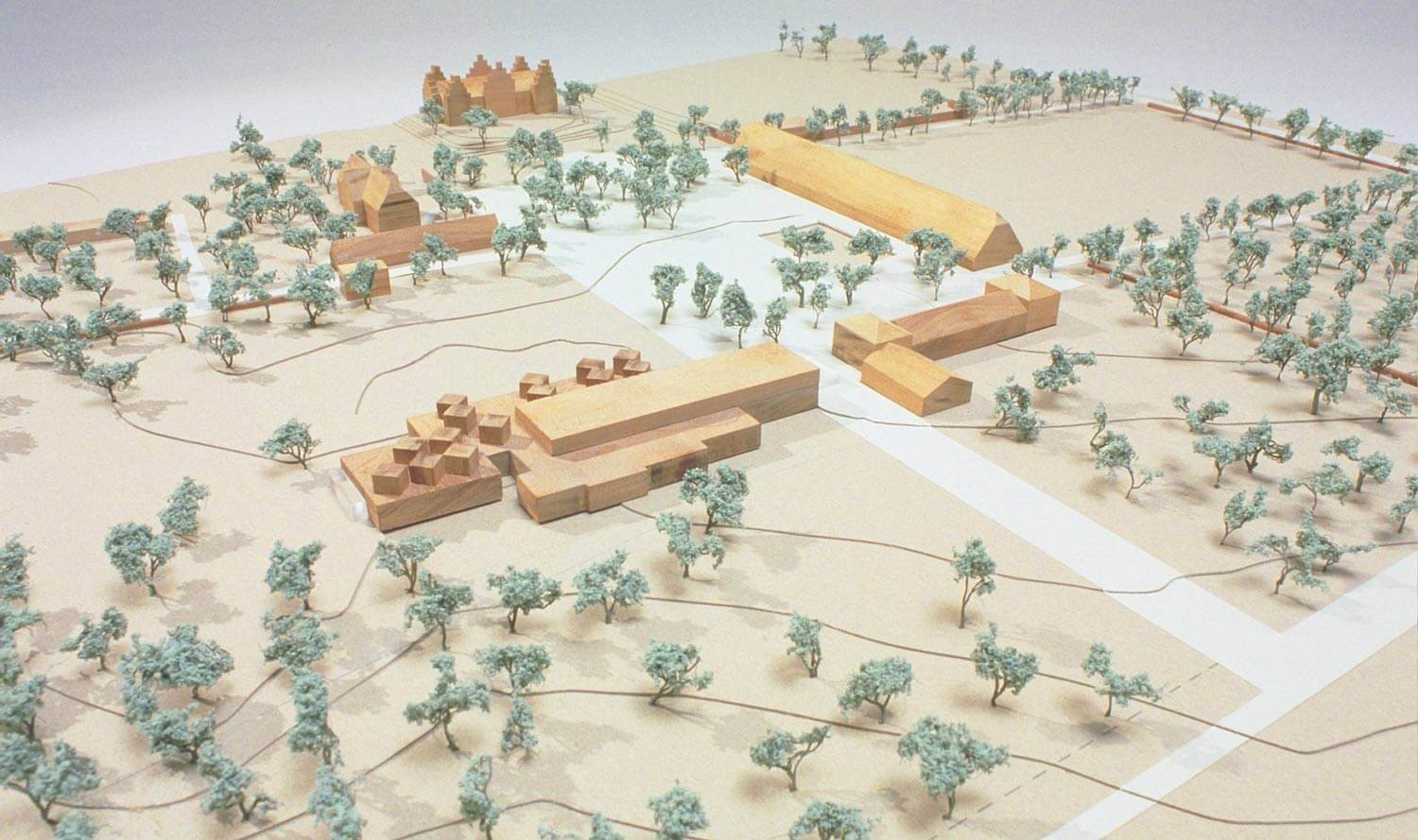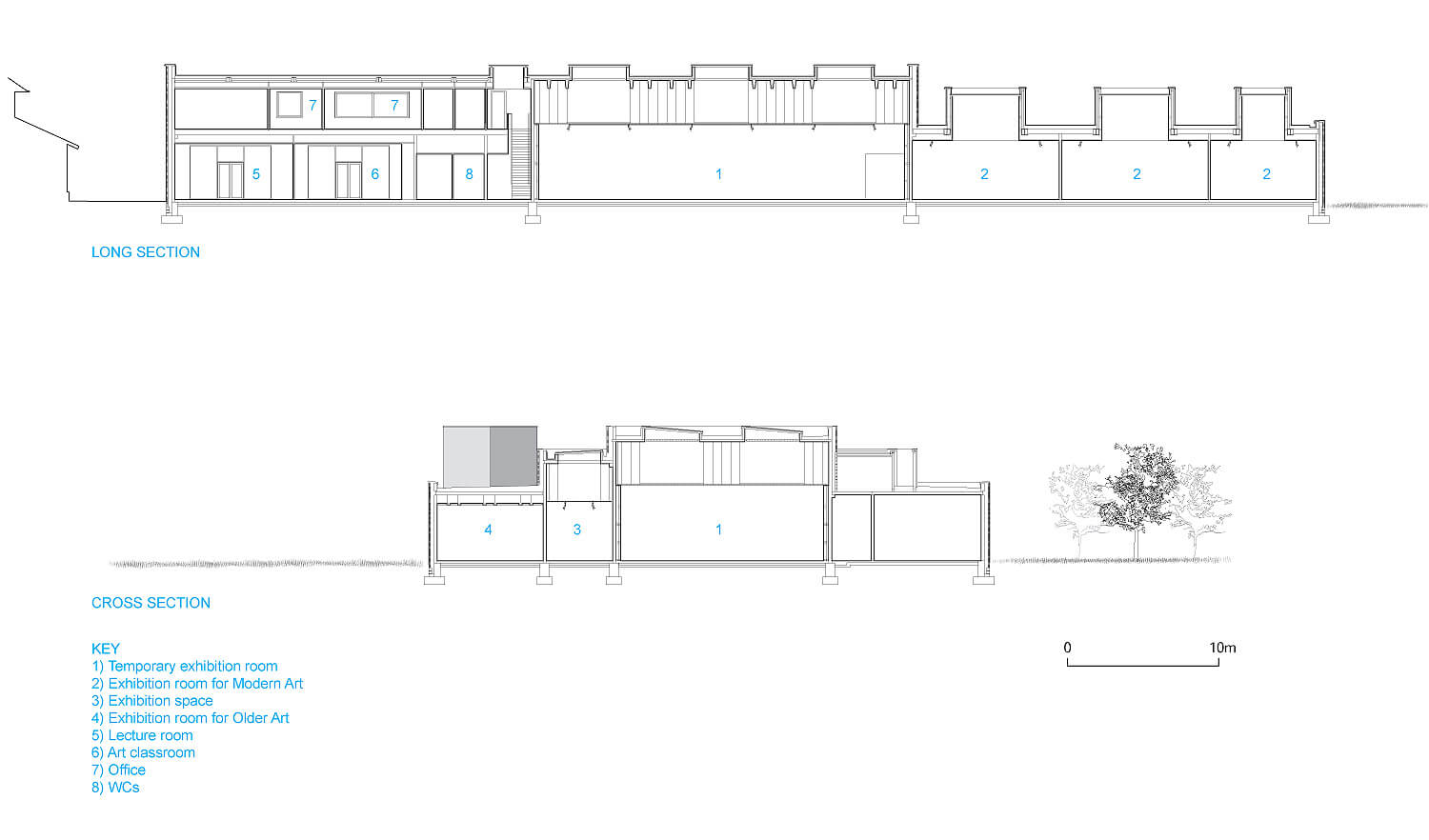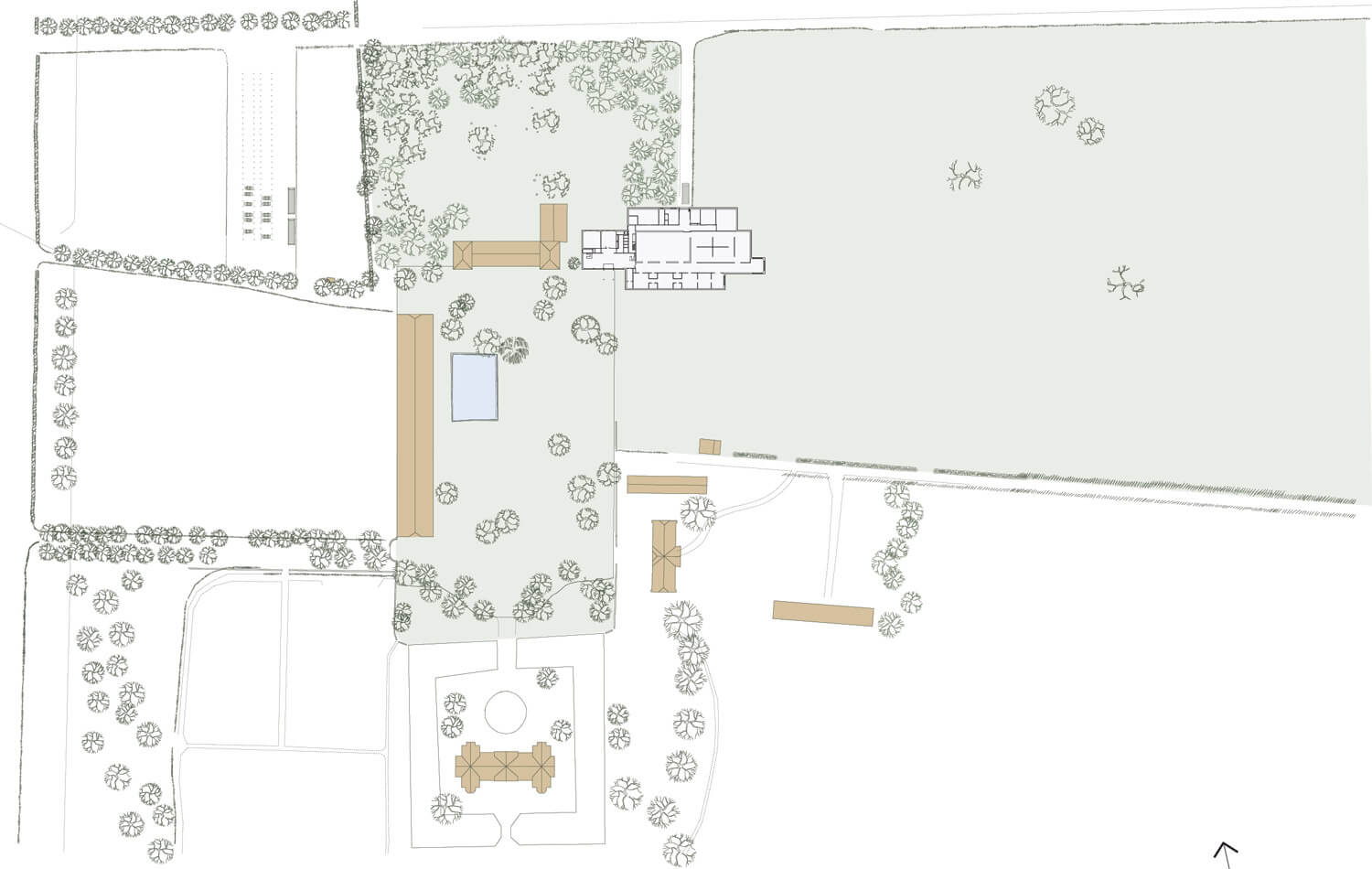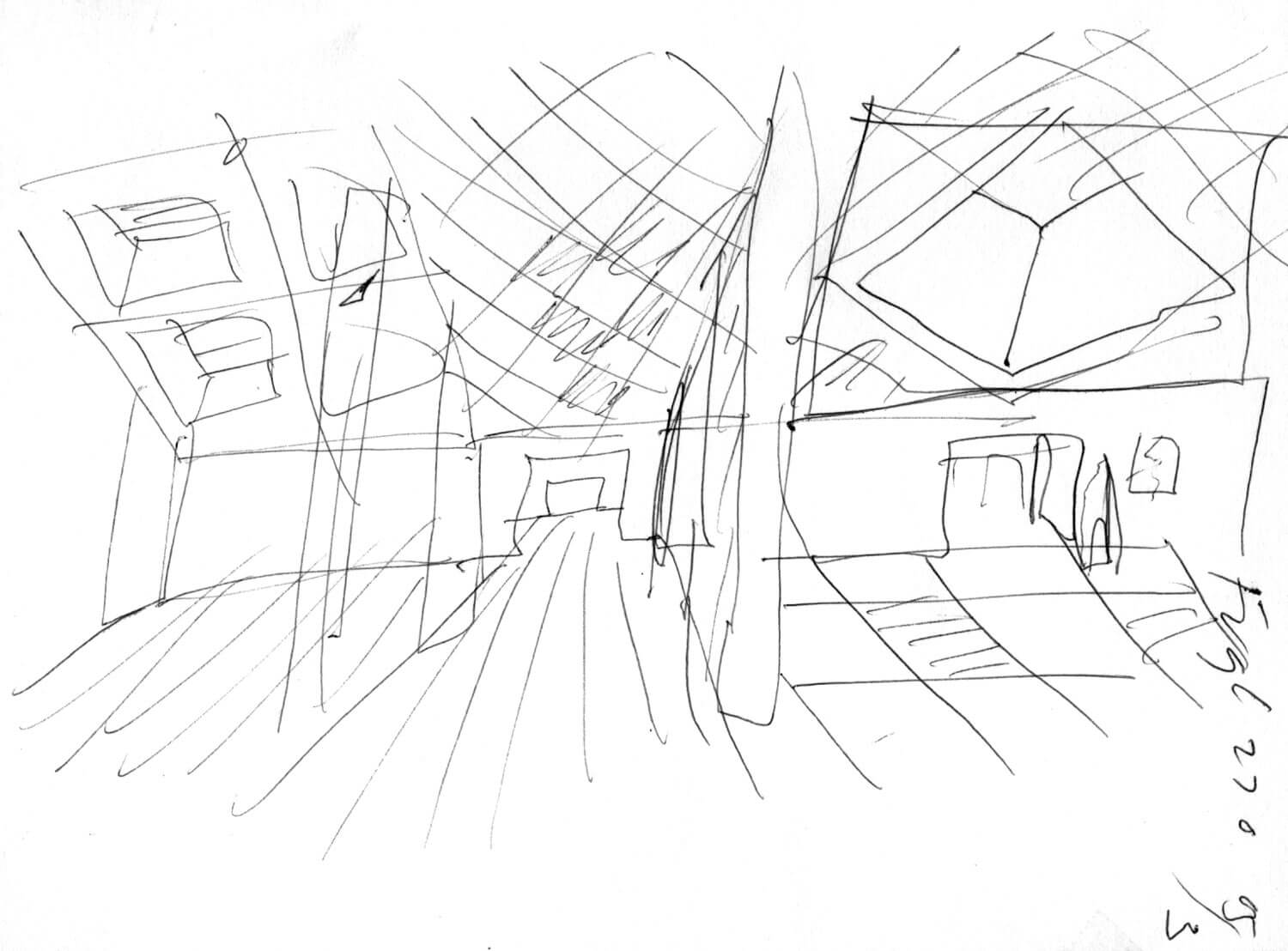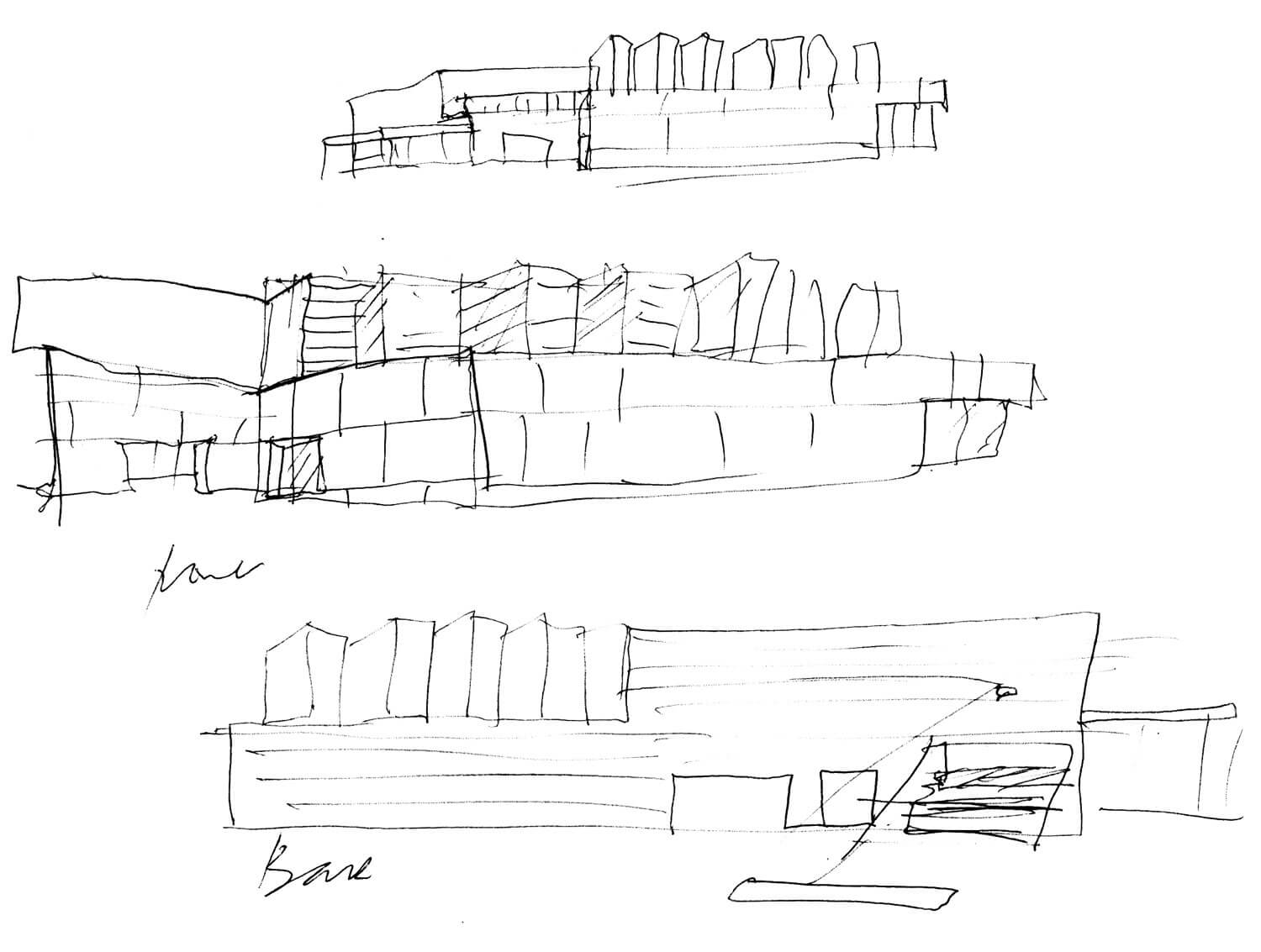Kunstmuseum Fuglsang / Tony Fretton Architects Ltd
Kunstmuseum Fuglsang / Tony Fretton Architects Ltd
Context
International design competition winning scheme for the masterplan of the Fuglsang Cultural Centre estate, Lolland, Denmark, including a new 2,500 sqm exhibition facility to house the Storstrøm Art Museum’s permanent collection of Danish fine art dating from the period 1780-1980, which is being relocated from Maribo. The scheme also comprises galleries for temporary exhibitions, a shop, a café, a learning centre, a play area, administration offices and storage.
The setting
The project is located within the buildings of a former farm on a site of exceptional beauty. Here the land extends completely level through sparsely delineated trees and fields to salt marshes at the edge of the sea that are a reserve for wild birds.
Unlike the location of an urban museum which is reached through the room-like spaces of a city, Fuglsang requires travelling for a long time through open countryside, and arrival is in the open air, among a loose arrangement of barns and houses around a courtyard at the heart of the estate. At one side of the court, at an appropriate distance and separated by a moat, is the Manor House, country classical in style, its red brick façade arranged as three tall gables and with decorated ceilings and parquet floors in the interior, their pattern changing from room to room.
The design
The scheme is planned so that the landscape will be the first thing that visitors see as they drive into the site and then walk to the building, which is placed discretely to the side.
The museum is designed not as an immediate and iconic building but one that is plain, calm and abstract, revealing its qualities slowly through experience and repeated visiting.
Visitors will first see the Museum obliquely. For this reason the main façade is given a strong profile and massing by three tall diagonal roof lights grouped above a sheer and windowless enclosing wall. This configuration is also composed with the primary forms of two neighbouring very old and high roofed barns and the façade of the Manor House that has three tall gables.
The Museum, like the farm buildings and land stewards house around it ,and many classic works of Danish modernism, are constructed with brick. Like the nearby barn that forms one side of the farmyard, the walls are painted white but with a thinly applied mineral paint so that is both firmly rooted in its surroundings and slightly unearthly. Above the wall the roof lights are constructed of grey brick, similar in colour to the roofs of the buildings nearby.
At the entrance a freestanding wide and low metal canopy, providing shelter from the rain for groups of visitors, leads into a glass weather lobby of equal scale and transparency situated inside the building.
The lobby is divided into a café on one side and bookshop and reception area on the other, which look back through extensive windows to the farmyard and into the adjoining room of the public art studio and a beautiful existing garden behind it.
The gallery spaces
Double glass doors lead to a long central corridor around which the museum spaces are organised in a series of three suites;
1. The first suite is characterised by medium sized rooms lit by the diagonal rooflights that were seen on the façade. These rooms have ornamental ceilings and coloured walls and house a collection paintings from 1800-1900. Further along is a room for Works on paper, which for reasons of conservation has no daylight. At the end is a room for plaster casts lit by a window that looks out to the Fuglsang estate. Between the main gallery spaces are very small areas, called pockets, for small number of people to view a single work of art.
2. On the opposite side of the corridor is a single, large, minimally detailed rectangular space for temporary exhibitions, which has almost the same length as the entire suite of medium scale rooms. Daylight comes into this tall space through a diffusing ceiling of metal grids, above which there is working space to support suspended artworks and install projectors.
3. The third suite is a plainly detailed rectangular space top lit and configured as four rooms and two ‘pockets’.
The corridor is a critical part of the arrangement. Axiality and length invite walking and the discovery of the three parts of the collection. The corridor terminates with a window looking onto the estate.
Inside the exhibition spaces have decorative ceilings, elements which draw on the special atmosphere and style of the existing buildings on the estate.
Materials and construction
Materials and components of the building are chosen for maintenance and local availability for reasons of environmental responsibility and also to maximize the use of the museum’s budget for its core activity, the showing and explanation of art.
Simple construction of masonry cavity walls on a raft foundation and concrete roofs allows rapid construction and limits construction costs.
The building is naturally ventilated by air shafts in the ceiling. Air extraction is located in the ceilings, embedded in the light shafts. A central heating system is powered by a shared bio fuel source.
Light shafts ensure optimum daylight whilst limiting direct sunlight falling on the artworks.
Drawings
Extra info
Client:
BYNINGSFONDEN / The Building Foundation
Value:
£4.5 million
Gross internal area (sqm):
2500
Design Team (competition):
Tony Fretton, Jim McKinney, David Owen, Matt Barton, Michael Lee, Nina Lundvall, Simon Jones, Martin Nässén
Project Architect (competition):
Matt Barton
Design Team:
Tony Fretton, Jim McKinney, Donald Matheson (PROJECT ARCHITECT), Guy
Derwent, Annika Rabi, Sandy Rendel, Matt Barton, Nina Lundvall, Simon Jones
Project Architect:
Donald Matheson
Executive Architect:
BBP Arkitekter A/S, Copenhagen
Structural Engineer:
Birch & Krogboe A/S
Services Engineer:
Birch & Krogboe A/S
Project Management:
BASCON A/S
Main Contractor:
CC BRUN ENTERPRISE A/S
Cost Consultant:
Birch & Krogboe A/S
Furniture Design:
TFA
Landscape Architect:
Schønherr Landskab A/S, Copenhagen






